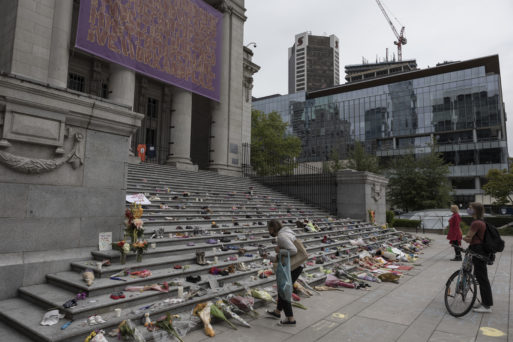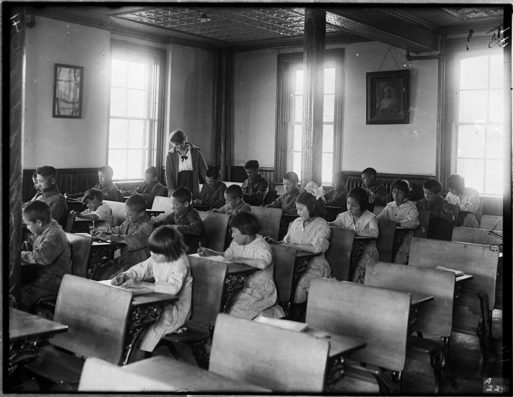
The Kamloops Residential School Memorial in British Columbia, Canada
Starting in the late 1800s, hundreds of thousands of Indigenous children in Canada were sent to federally funded, church-run “residential schools” to be forcibly assimilated into Western colonial culture. This was part of a broader effort to strip Indigenous citizens of their heritage and traditions, a program that Canada’s National Truth and Reconciliation Commission now terms “cultural genocide.”
At the very least, these schools separated Indigenous children from their families and deprived them of their cultural identities, even forbidding the use of their native languages. However, in many cases the cruelty of the system ran much deeper: It has been widely shown that several residential schools were also the sites of physical, emotional and sexual abuse and neglect. Many children who were sent to these schools simply disappeared without a trace. Now, chilling new evidence suggests that some of these children may have died and been buried onsite in unmarked graves.
In May of 2021, the Tk’emlups te Secwepemc First Nation in British Columbia used ground-penetrating radar to scan the property of the Kamloops Indian Residential School. While efforts to locate unmarked graves had been underway for decades, the radar technology yielded new progress when over 200 bodies were found buried on the property. Of these, at least one was a child as young as 3.
Only weeks later, the Cowessess First Nation in Sasketchewan used the same technology to detect an unmarked gravesite at the Marieval Residential School, where they discovered the remains of over 750 people, mostly Indigenous children.
These discoveries shed new light on the horrors suffered by Indigenous children at these residential schools, which operated for over 150 years in Canada. However, the extent of this abuse likely comes as no surprise to many Indigenous communities. The last residential school in Canada closed in 1996, meaning that many alive today experienced the system’s cruelty firsthand. Stories of death within the schools have circulated for decades, but this is the first time evidence of these deaths has been uncovered on such a massive scale.

Residential schools forced Indigenous children to talk, dress and act according to Western traditions, often punishing them severely if they failed to do so.
While the number of remains discovered is staggering, these discoveries came from scanning only a small portion of residential school properties. On those two sites alone, much of the land has yet to be scanned, and hundreds more former residential schools exist across the nation. The communities that conducted these searches will continue to scan the properties and have received requests from other First Nations wanting to learn how to use the technology. The truth of how many Indigenous children lost their lives at these schools may finally be in reach.
In response to these discoveries, the Canadian government has promised just under 4.9 million Canadian dollars to aid in the search for Indigenous graves at residential school sites. This is a significant shift, as requests for funding such efforts have been denied by the government in the past. The discoveries have also renewed interest in similar efforts in the United States, which had its own residential school system with an equally dark history.
“There’s no denying this: All of the stories told by our survivors were true,” Chief Bobby Cameron of Canada’s Federation of Sovereign Indigenous Nations told the New York Times. “This was a crime against humanity, an assault on a First Nation people.”

 Newly Discovered Unmarked Graves Point to Abuse at “Residential Schools”
Newly Discovered Unmarked Graves Point to Abuse at “Residential Schools”


 “Other Side” Documentary Directed by Carter Oakley and Heather Hogan
“Other Side” Documentary Directed by Carter Oakley and Heather Hogan
















